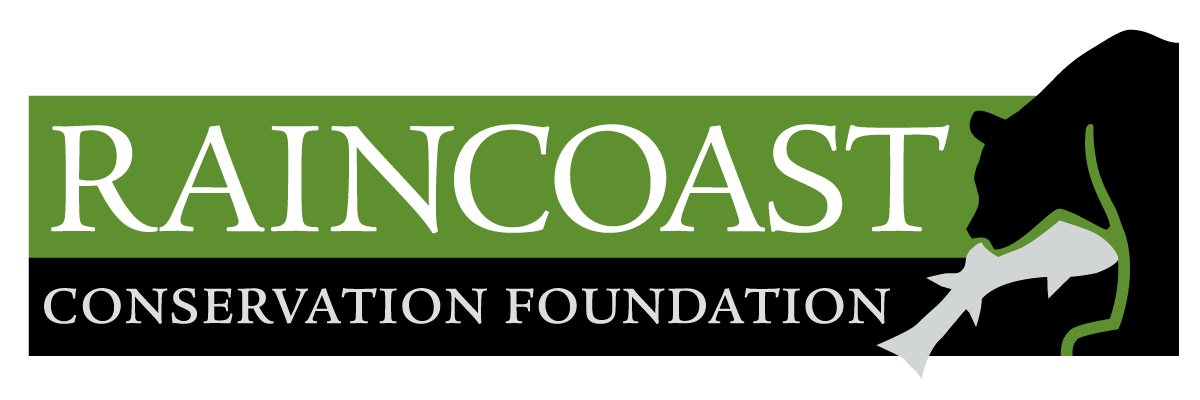New study shows importance of salmon species diversity in coastal black bears’ diets
Sidney, British Columbia: Managing salmon for wildlife typically focuses on providing enough biomass, a measurement of the total kilograms of spawning salmon, to promote salmon consumption that in turn benefits population health and productivity. A new study by scientists at Spirit Bear Research Foundation, Raincoast Conservation Foundation, and the University of Victoria, shows that salmon species diversity – the number of spawning salmon species available – is far more important and positively related to salmon consumption in coastal black bears than biomass abundance. These results were published today in the peer reviewed and open access journal, Journal of Animal Ecology .
Christina Service, a Spirit Bear Research Foundation and Raincoast scientist and PhD candidate at the University of Victoria, led a team that used chemical techniques (stable isotope analysis) on hair samples from black bears to estimate their salmon consumption, a measure that strongly relates to population productivity and health. They asked whether consumption patterns were affected by biomass, salmon diversity, and competition with other bears, both black and grizzly. The landscape level study (22,000 km2) used non-invasively sampled hair from 379 black bears and 122 grizzly bears in collaboration with the Wuikinuxv, Nuxalk, Heiltsuk, and Kitasoo/Xai’xais First Nations in coastal British Columbia’s “Great Bear Rainforest”.
The study found that salmon biomass did not affect salmon consumption, at least in the relatively productive watersheds in this region. Rather, salmon species diversity had a large and positive effect. For example, the same amount of salmon biomass across four species allowed black bears to consume approximately 3 X more salmon each year compared to a scenario in which the same biomass comprises one large run of a single species (see infographic below). “This pattern is likely driven by the fact that each salmon species offers bears very different fishing opportunities by using different parts of the river to spawn and arriving at different times throughout the year”, said Service. For example, although the simulated removal of two species in a watershed in our study area that naturally hosts four species may only result in a biomass drop of approximately 3%, the total spawning channel length that is fishable by bears drops by approximately 60%. Additionally, the total number of days that salmon are in the river and vulnerable to predation decreased by 30%.
Grizzly bears also played a role in salmon consumption by black bears. Black bears consumed approximately 40% less salmon when they co-occurred in watersheds with grizzly bears.
For Douglas Neasloss, Chief Councillor and Resource Stewardship Director for the Kitasoo/Xai’xais Nation (that helped finance this research), these results hit home. His community of Klemtu has invested in development of a conservation-based economy that relies on bear viewing. He is concerned that the federal government’s current salmon management focuses on large salmon runs and often ignores smaller runs that often contribute disproportionately to diversity. He states “It is no stretch to say that my community’s well-being is directly related to the well-being of the bears. Managing salmon, including continued investment in monitoring them to ensure their diversity, is critical for making informed decisions that benefit salmon, bears, and communities”.
Broadly, these results provide insights to managers of both terrestrial wildlife and fisheries. Should managers want to maintain opportunities for bears to eat high levels of salmon, maintaining the diversity of species present in watersheds will be key. This requires safeguarding smaller, less commercially important salmon species, often neglected in salmon management.
